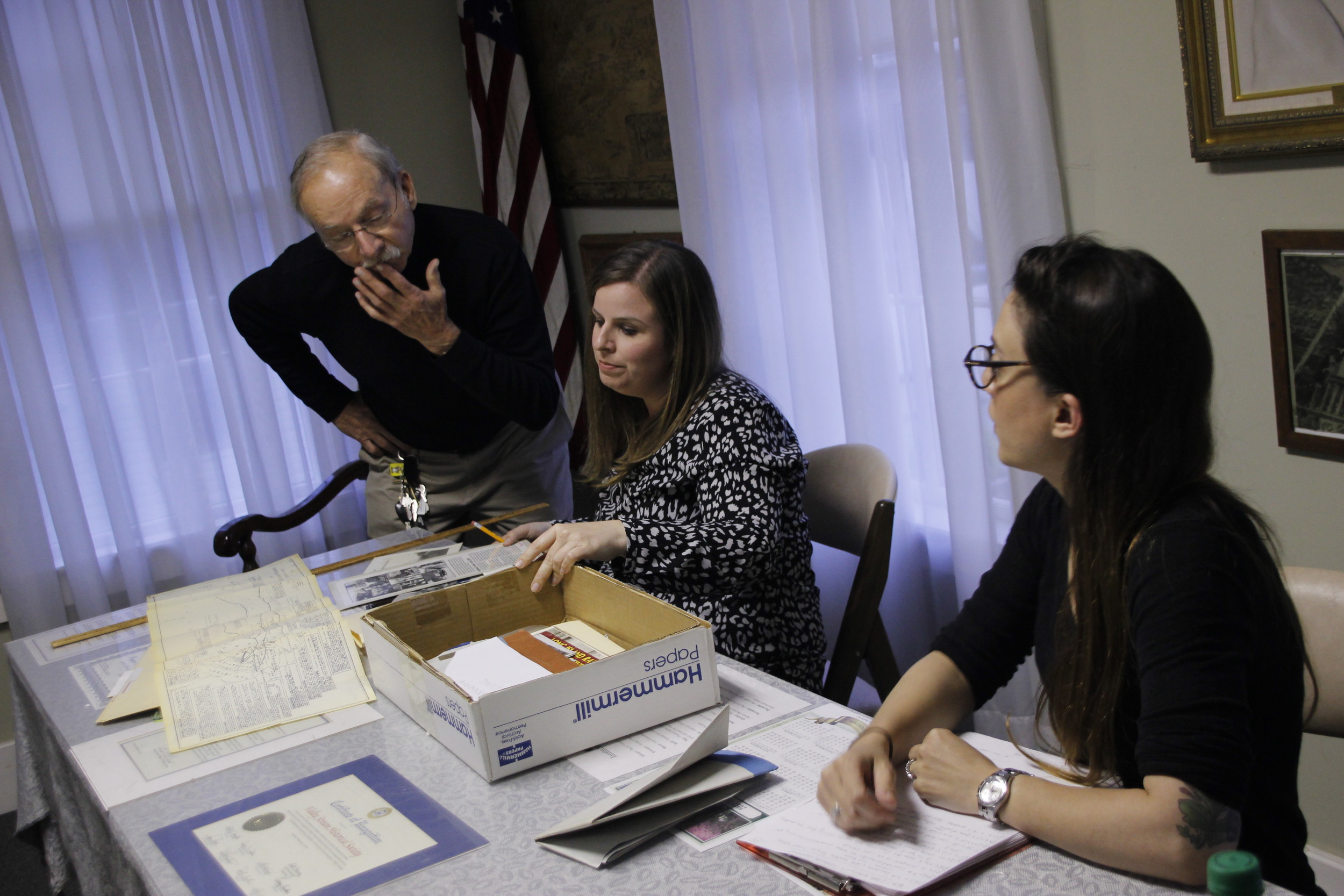Unpacking Valley Stream’s past, box by box
Historical Society members catalog artifacts
Two women have spent the last two years going through a room full of boxes, one at a time, at the Pagan-Fletcher Restoration in Valley Stream, cataloging snippets of local history.
“We have to get it out there somehow,” said Christina Scali, of Merrick, “so the first step is just taking inventory of everything we have and making it searchable.”
Scali and Jaclyn Kunz, of Lynbrook, the children’s librarian at the Henry Waldinger Memorial Library, both have master’s degrees in library science and are members of the Valley Stream Historical Society’s board of trustees. As it happens, both are also graduates of Central High School.
A single box can take several weeks to catalog — especially if Scali and Kunz get sidetracked by an item they find interesting. They make a detailed list of what’s inside each box, measure any artifacts and fill in a handwritten log that they eventually plan to digitize and make searchable for the public.
“Personally, for me, I’m a children’s librarian, and I look at everything through the eyes of children,” Kunz said. “And I feel if you grew up in Valley Stream — or anywhere — you should know where it is that you’re living, and you should know its history.”
The pair said they have come across maps, suburban blueprints and photos of people swimming and sunbathing at Arthur J. Hendrickson Park Lake, which many current residents do not realize was once open for such activities.
The women shot each another a glance of joy when asked about the most interesting artifact they have come across in the collection over the years — each offering a new answer every 30 seconds or so. “Any sort of correspondence, I think, is so interesting,” Kunz said, “and just to hear, like, the language that people used. And the amount of time that would have to go by between these letters. That would blow a kid’s mind. It’s not like a text message. It took months.”
They also recently discovered a collection of restaurant menus from as far back as the late 1800s to the 1950s. Scali said she was fascinated to see the advertising inside them, how much food cost and what people ate.
“I feel like, every box there’s something where we’re like, ‘This is amazing,’” Scali said. “And nobody else sees it but us.”
Before they can finish the database, however, she added, some of the documents they’ve found need attention. “We have things in here that are suffering,” she said with a laugh. Many of the documents are tattered or breaking apart.
“What’s funny is that a lot of things are laminated, which in the archival world you’re really not supposed to [do],” Scali said, “but it was run by volunteers all these years, and they were just doing what they thought was right.”
There are dozens of historical societies on Long Island, but they do not all communicate with one another, and many are at various stages of archiving artifacts. Kunz and Scali estimated that they were about 70 percent through the Valley Stream collection, and that once they have finished taking inventory, the process should pick up speed.
“We’re also aware of the scale of what we’re doing, like we’re not a museum,” Kunz said. “We’re just trying to come up with something that’s user-friendly for the public.”
For more information about the Valley Stream Historical Society and tours of the Pagan-Fletcher Restoration, visit vsvny.org or email vshistorical@gmail.com.









